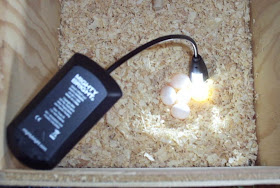Since posting about a recall of Kaytee Exact a week ago on April 20, we've been contacted by others who hadn't heard of this danger to their baby birds and may lose them.
| A young Senegal Parrot Photo from southtexasaviary.com |
http://www.kaytee.com/pet-birds/kaytee-exact-hand-feeding-update.htm"
Very sad and we pray for them too. We are grateful to a reader who first shared this sad recall news with us and want to notify as many bird breeders as possible. Everyone, spread the information as widely as you can.
If you've purchased Kaytee Exact Hand Feeding Formula, go to their website Kaytee Exact Recall Site and be certain you have SAFE food for your youngsters. Symptoms from Kaytee's food with too much Vitamin D are: "Baby birds that have consumed formula with high vitamin D levels may become weak
and inactive and show a lack of appetite, vomiting, increased thirst, and have
increased urine excretion (watery droppings)."
Kaytee's site tells you where to look for the recall dates on their product. They're also given on our first post about this, on the site at the top of this page. What Kaytee doesn't mention, however, is that if you have an open bag of the 5 lb. Exact Hand Feeding Formula, the date has probably been torn off. That was the circumstance with our bag. By chance, luckily I wrote the expiration date down when I opened it. I remember being annoyed at the time that they'd put the date where it could be ripped through and lost. Even though our bag's date is January 17, 2013 the whole situation with the food makes me uneasy.
If you, too, no longer have a date on your bag, contact the store or online retailer where you bought it. They may be able to tell you what dates they stocked. Certainly, Kaytee should have records of where they sent their product manufactured on a certain date. They will have notified those retailers to remove it, but a lot of it has already gone to consumers like you and me. We can hope the retailers contacted any and all customers they know of, and have placed signs and information up about the recall. The retailer where I bought my product has NO INFORMATION up about this at all!
Hopefully, you have a receipt that shows when and where you bought it. Possibly a canceled check, a credit card statement, an order confirmation email if bought online, or an account order history from an online retailer. This won't tell you what the expiration date was, but might give the retailer some indication of whether he was selling the "bad" dates at that time. If you still can't be certain, contact Kaytee and ask for a replacement. Don't feed your Exact Hand Feeding Formula if you can't be certain it's not among their recall dates.
If you are among those unfortunate to have sick or dead birds as a result of feeding Kaytee's formula with too much Vitamin D in it, I hope Kaytee makes financial restitution to you...even though that's of little comfort.
Best of luck and God Bless you and your birds.
 |
| A baby Rosy Bourke Parakeet |







































